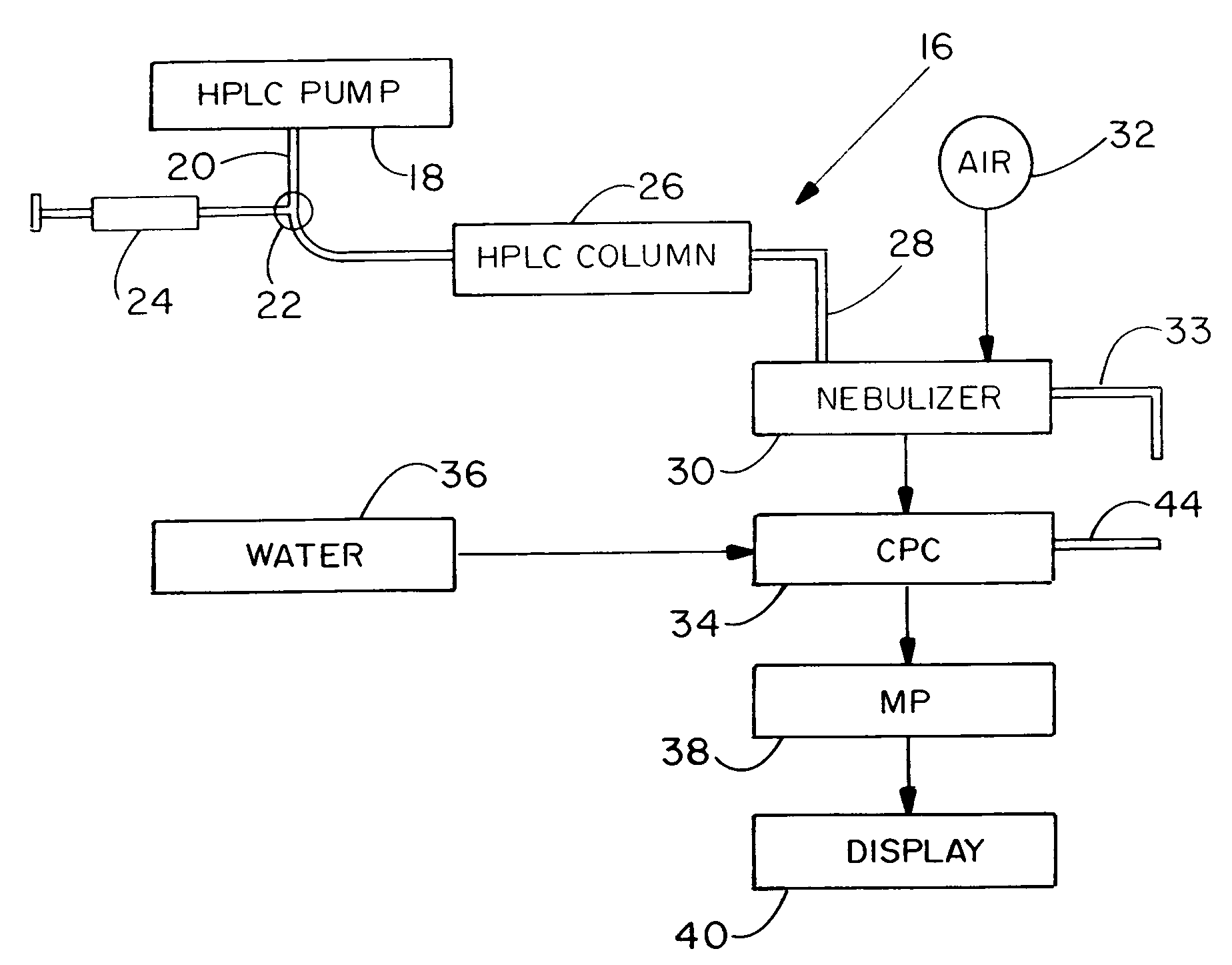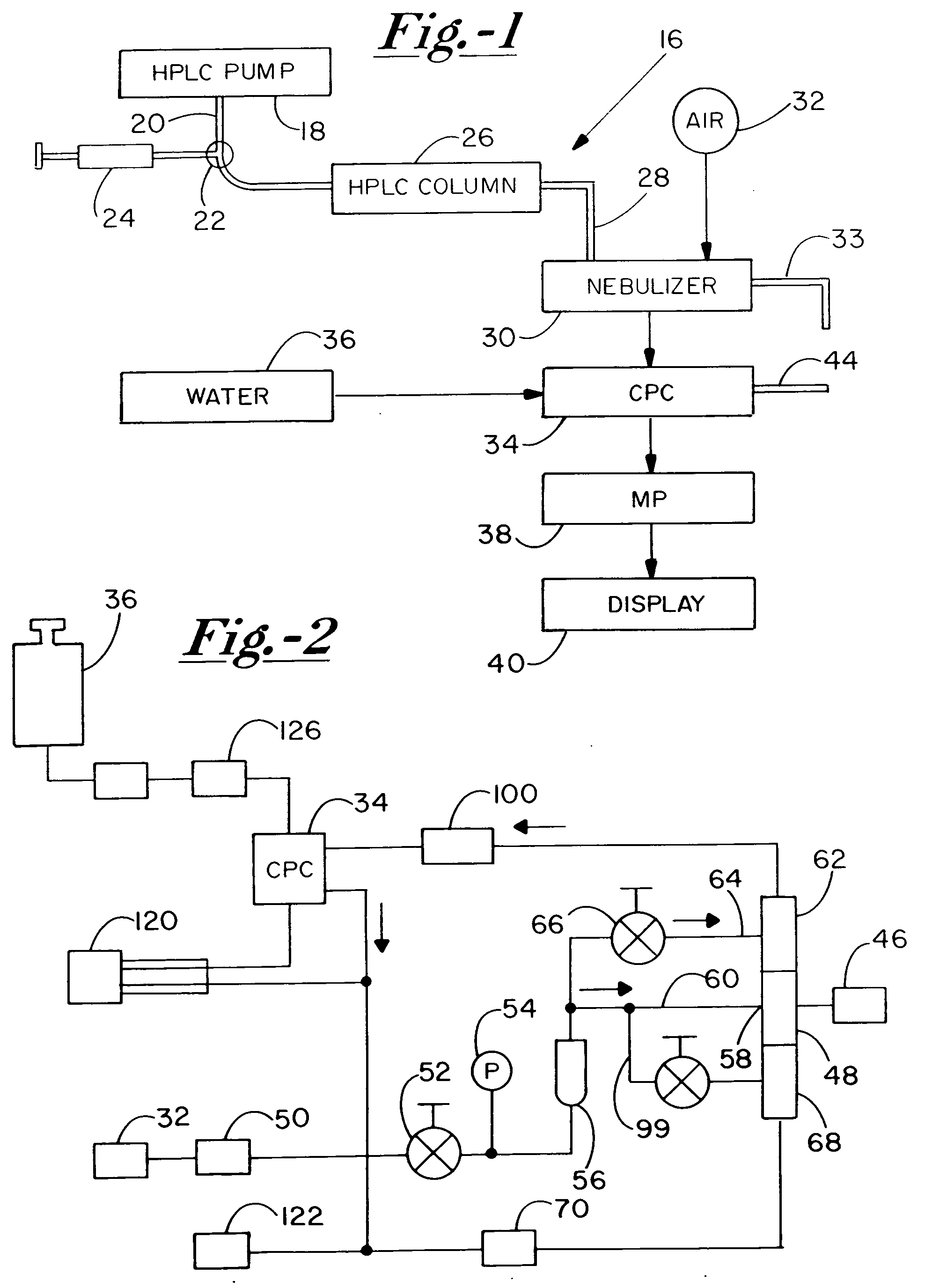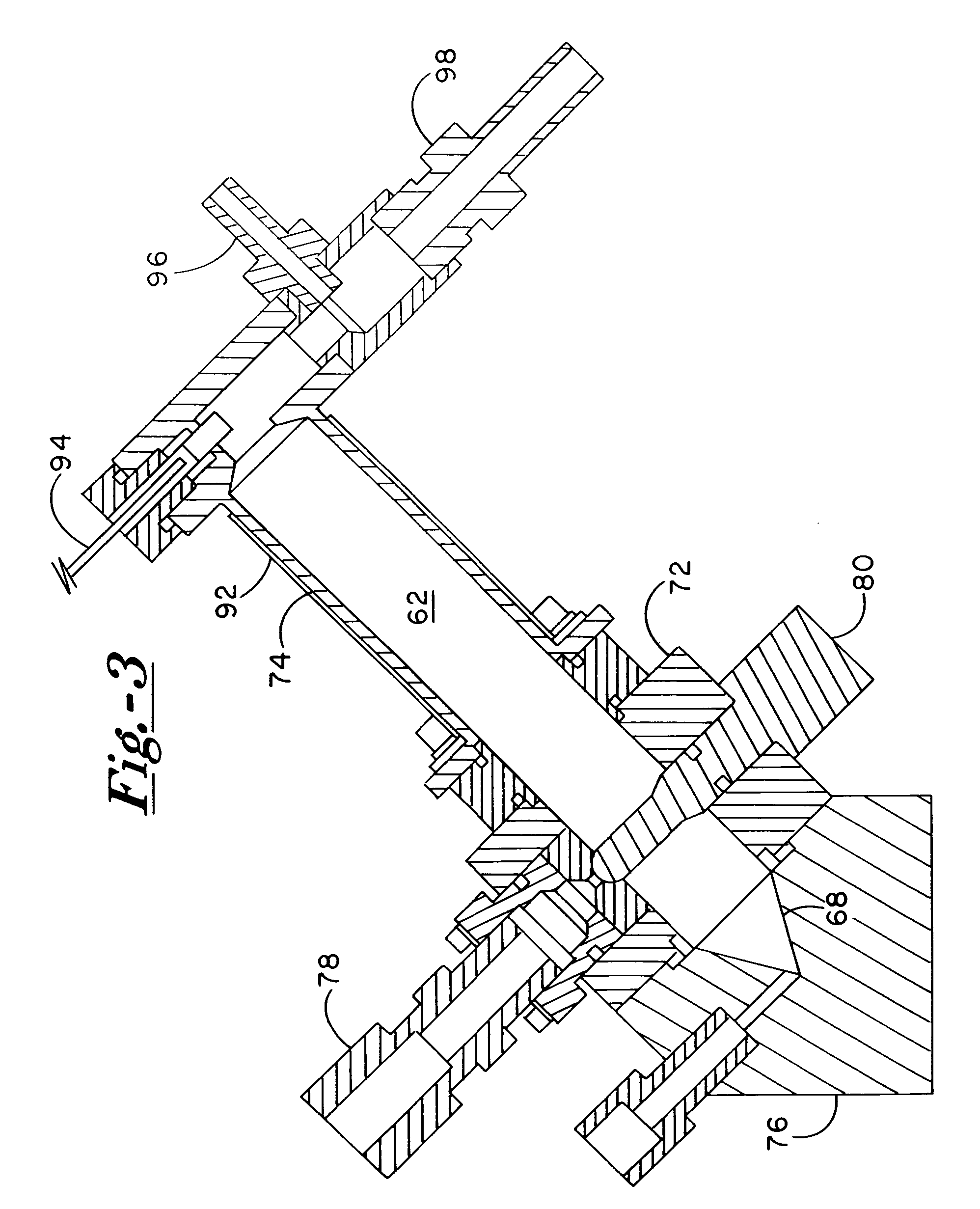Measuring Analyte Concentrations in Liquids
a technology of analyte concentration and liquid, which is applied in the direction of instruments, combustible gas purification/modification, separation processes, etc., can solve the problems of limiting the utility of analyte concentration detection and measurement, lack of sensitivity sufficient for detecting and measuring extremely low analyte concentration, and bubble formation, etc., to achieve a smaller droplet size, reduce the size of the droplet, and increase the kinetic energy mixing
- Summary
- Abstract
- Description
- Claims
- Application Information
AI Technical Summary
Benefits of technology
Problems solved by technology
Method used
Image
Examples
Embodiment Construction
[0053]Turning now to the drawings, there is shown in FIG. 1 a diagram of a high performance liquid chromatography (HPLC) system 16 for identifying and measuring concentrations of non-volatile residue constituents dissolved in water or another liquid. The system includes a high performance liquid chromatography pump 18 for supplying water or another solvent as a carrier liquid (mobile phase) through a conduit 20 at a predetermined constant flow rate, e.g. 1 milliliter per minute. An injection valve 22 along conduit 20 is coupled to a syringe 24 containing a liquid sample and operable in stepped fashion to introduce substantially instantaneous injections of the liquid sample into the carrier liquid stream. The injections do not undergo any substantial mixing with the carrier liquid, but instead form plugs of the liquid sample that remain substantially separate from the carrier liquid. The liquid sample includes a base liquid such as water, acetonitrile (CH3CN), or alcohols, along with...
PUM
| Property | Measurement | Unit |
|---|---|---|
| pressure | aaaaa | aaaaa |
| temperature | aaaaa | aaaaa |
| diameter | aaaaa | aaaaa |
Abstract
Description
Claims
Application Information
 Login to View More
Login to View More - R&D
- Intellectual Property
- Life Sciences
- Materials
- Tech Scout
- Unparalleled Data Quality
- Higher Quality Content
- 60% Fewer Hallucinations
Browse by: Latest US Patents, China's latest patents, Technical Efficacy Thesaurus, Application Domain, Technology Topic, Popular Technical Reports.
© 2025 PatSnap. All rights reserved.Legal|Privacy policy|Modern Slavery Act Transparency Statement|Sitemap|About US| Contact US: help@patsnap.com



